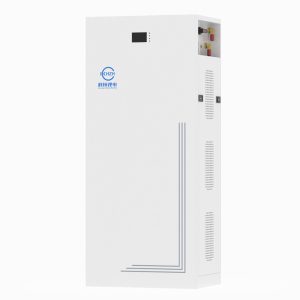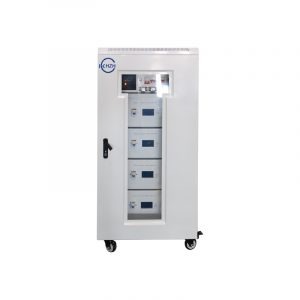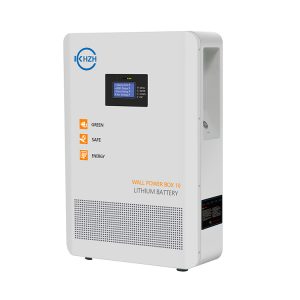Introduction
The Critical Role of Battery Selection for 3000 Watt Inverters
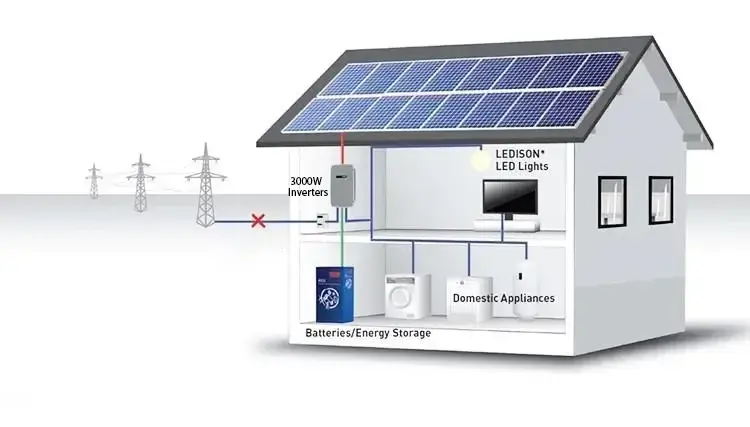
Choosing the right number of batteries for your 3000-watt inverter is a critical decision that directly impacts the performance and efficiency of your power system. Batteries are the backbone of any off-grid or standby power setup, providing the necessary energy storage to ensure continuous operation of the inverter.
The correct number of batteries not only determines how long the system can run without external power input but also affects the overall reliability and efficiency of the system. It’s important to understand that an insufficient number of batteries can lead to a lack of power supply, which can cause power interruptions and inconvenience when you need reliable power the most.
Considerations for Optimal Battery Settings
Several key factors must be carefully considered when determining the optimal battery settings for your 3000-watt inverter. One key factor is the type and capacity of the battery selected, as different battery technologies have different performance characteristics such as cycle life, depth of discharge and maintenance requirements. The main types of batteries commonly used on the market are lithium iron phosphate and lithium ternary.
It is also vital to understand your specific power requirements; this includes calculating sustained and surge power requirements to ensure that the selected battery configuration can effectively handle peak loads. Factors such as physical size, weight and compatibility with inverter systems should not be overlooked when choosing a battery.
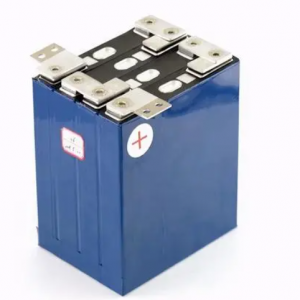
Balancing the benefits of inverters and batteries
Achieving the optimum battery setup for a 3000 Watt inverter requires a delicate balance of competing factors. It’s not just about choosing the battery with the highest capacity, it’s about choosing a configuration that maximizes efficiency while effectively meeting the needs of energy storage.
Factors such as cost-effectiveness, available battery installation space, and expected runtime in the event of outages or off-grid use all play an important role in determining the right balance to meet your specific requirements. By carefully considering these factors in advance, you can avoid the common pitfalls of having a battery bank with too much or too little capacity, and ensure that your inverter system operates seamlessly when it matters most.
Common Sense Power
Wattage
Power output is the key metric for determining the energy capacity required by a 3000-watt inverter. Power, expressed in watts, is the rate at which energy is consumed or produced.
In the case of an inverter, a watt represents the amount of electrical energy that can be delivered to the equipment to which it is connected. Understanding this measurement is critical when designing a battery unit, as it directly affects the performance and longevity of the system.
Calculating the Power Consumption of a 3000 Watt Inverter
To calculate the power consumption of a 3000 watt inverter, both continuous power and surge power requirements must be considered. Continuous power refers to the sustained energy required to run the equipment connected to the inverter under normal operating conditions.
Surge power, on the other hand, refers to temporary spikes in energy demand when the equipment is first started up or during sudden high-power activities. Both types of power requirements must be considered when determining how many batteries are needed to effectively support a 3000-watt inverter.
Determining Continuous and Surge Power Requirements
Continuous and surge power requirements vary depending on the specific equipment you plan to run with the 3000 Watt Inverter. Continuous loads such as lights or small appliances have a steady level of power consumption, while high-power devices such as refrigerators or power tools may require additional surge power at startup.
By carefully evaluating the individual power requirements of each device and summarising them, you can accurately determine the continuous and surge power requirements for your 3000 Watt Inverter setup. Planning ahead for these scenarios ensures that your battery bank will provide enough energy without overloading or damaging your equipment.
Battery Types for 3000 Watt Inverters
Common Batteries
When choosing a battery for your 3000-watt inverter, there are several types to choose from, each with their own features and benefits. The most common of these are lead-acid and lithium batteries. Lead-acid batteries are known for their reliability, low cost and ease of maintenance.
On the other hand, lithium-ion batteries offer higher energy density, longer lifespan and faster rechargeability, but are more expensive. Understanding the differences between these two types of batteries is essential to making an informed decision based on your specific needs and preferences.
-
Server Rack Battery
204v 20kwh Lifepo4 Battery High Voltage Energy Battery Storage System
-
All-in-one Energy Storage System
48V 5KW/20KWH LiFePO4 Battery Energy Storage System
-
Powerwall Battery
10KWH LiFePO4 Powerwall Mounted Energy Storage System
Factors to consider when choosing a battery
When selecting a battery for a 3000-watt inverter, several key factors should be considered to ensure optimal performance and longevity. One of these key factors is capacity – the amount of energy a battery can store, usually measured in Ampere hours (Ah).
Selecting a battery with sufficient capacity is critical to meeting the power requirements of the inverter system and maintaining reliable operation over long periods. Voltage compatibility is another important consideration, as it determines whether the battery can provide the required voltage output to support seamless operation of the inverter.
Size and weight are practical considerations that should not be overlooked when selecting a battery for a 3000 watt inverter installation. The physical dimensions of the battery need to match the installation space.
It is also important to consider weight if portability or ease of handling is a concern. While high capacity batteries can provide longer run times, they can also be bulkier than smaller capacity batteries.
Balancing these factors with your specific installation requirements and usage will help you choose the battery configuration that best suits your needs. Thoroughly examining available battery types (such as lead-acid and lithium-ion) and evaluating key factors such as capacity, voltage compatibility, size and weight when making your selection decision will ensure that you make an informed choice that both meets your power needs and maximises the efficiency and performance of your 3000 watt inverter system.
Calculating battery pack size
Determine the total amount of storage required based on power requirements and desired runtime.
When determining the total storage capacity required for a 3000 watt inverter setup, you must consider both the power requirements of the inverter and the required runtime. The power requirement refers to the amount of power the inverter can handle, in this case 3000 watts. This value is critical for calculating how much energy to draw from the batteries during operation.
In addition, the required runtime plays an important role in determining the length of time the system will be powered by the battery without needing to be recharged. To calculate the total energy storage capacity required, multiply the 3000 watts of power consumption by the required run time in hours.
For example, if you want the system to run for 4 hours at 3000 watts, you will need 12,000 watt-hours (Wh) of total storage capacity. This calculation provides a baseline figure that can guide you in selecting the appropriate battery pack capacity for your specific needs.
Calculating the Ampere Hour (Ah) Rating Required for a Battery Pack
Ampere-hour (Ah) rating is a key metric when determining the required battery bank capacity for a 3000-watt inverter setup. The current rating indicates how much current the battery can deliver over a period of time. To calculate the rated current required for a battery bank, divide the total amount of power stored in the battery (in Wh) by the rated voltage of the battery.
For example, if you have determined that a total storage capacity of 12,000 Wh is required and you are using a 12V battery, then the Ah rating is calculated as follows: Ah = Total Storage Capacity (Wh) / Battery Voltage
= 12,000 Wh / 12V = 100 Ah
Therefore, based on this calculation, you will need a battery with a current rating of at least 100 Ah to support a continuous output of 3000 Watts for the specified runtime. It is important to ensure that the battery you select has sufficient Ah capacity to meet peak and sustained power requirements without compromising performance or service life.
Optimal Battery Configuration for a 3000 Watt Inverter
When powering a 3000-watt inverter, choosing the right battery configuration is critical to achieving optimal performance. A common approach is to use a combination of series and parallel 12V batteries.
By connecting the batteries in series, the total voltage output can be increased, while connecting them in parallel increases the total capacity and current handling. This provides a balance between voltage and capacity to effectively meet the power requirements of a 3000 watt inverter.
To determine the ideal configuration based on common battery sizes on the market, consider both voltage and capacity requirements. For example, if the Ah value of the 12V batteries used matches your energy storage needs, creating a Parallel Vs. Series battery combinations can help achieve the ideal balance. By carefully calculating the number of batteries required based on their respective current ratings and strategically connecting them in series and parallel, you can optimise performance and ensure reliable power for your 3000 watt inverter system.

Tips for Keeping Batteries Healthy and Extending Their Life
Batteries are the lifeblood of your 3000-watt inverter system, providing the necessary power for equipment and appliances. To ensure the longevity and optimal performance of your batteries, it is critical to adhere to proper maintenance practices.
A key tip is to regularly inspect the battery for signs of damage, corrosion or leakage. Any problems should be addressed promptly to prevent further deterioration and potential safety hazards.
In addition, keeping the battery terminals clean and free of corrosion will help maintain good connections and efficient power transmission. Proper charging is another key factor in extending the life of your battery.
Avoid overcharging or undercharging your batteries, as both can cause irreversible damage to your batteries and significantly reduce their capacity over time. Invest in a quality charger that is compatible with your battery type and follow the manufacturer’s guidelines on charging cycles.
Implementing a regular maintenance programme, including balanced charging (where applicable) and periodic capacity tests, will help to monitor the health of your battery and ensure that it is operating at peak performance. Regularly monitoring the State of Charge (SoC) and State of Health (SoH) of the battery is critical to extending battery life and maintaining optimal performance.
Utilising a battery monitoring system or intelligent battery management software can provide real-time data on key metrics such as voltage levels, temperature, charge/discharge cycles and overall battery health. By tracking these parameters over time, you can identify any deviations from normal behaviour early on and take corrective action to prevent potential problems or failures from occurring.
Conclusion
In the power system world, choosing the right number of batteries for a 3000-watt inverter is a critical decision that should not be taken lightly. We’ve delved into the intricate details of power requirements, battery selection criteria, and optimal configurations.
Understanding factors such as power consumption, battery type and energy storage capacity calculations is essential to ensure seamless operation of the setup. By carefully evaluating these aspects, one can create an efficient and reliable power system that effectively meets their needs.
FAQ about how many batteries need for 300W inverter
When determining the number of batteries needed for a 3000 Watt inverter, it’s important to calculate the total amp hours required to power the inverter. This can be done by considering the total wattage of the inverter and the voltage of the batteries. Another important factor to consider is the depth of discharge for the batteries, which refers to the percentage of the battery’s capacity that can be used before it needs to be recharged. This factor will also impact the number of batteries needed to power the inverter effectively.
When selecting batteries for your inverter, it’s important to understand the different types available, such as lead-acid, lithium-ion, and gel batteries. Factors such as cost, lifespan, and maintenance requirements should be considered. Additionally, calculating the battery capacity needed for your inverter is crucial. This involves determining the amount of power your inverter will draw over a certain period of time, and selecting a battery with enough capacity to meet those demands.
When it comes to choosing the right wiring configuration for your batteries, it’s important to consider factors such as the voltage and capacity of each battery, as well as the overall system requirements. Proper battery connections are essential for safety and efficiency. It’s important to use the correct gauge of wire for the connections, as well as to ensure that all connections are secure and free from corrosion.
Understanding the impact of temperature on battery performance is crucial for ensuring optimal functionality. High temperatures can accelerate the aging process of batteries, leading to reduced capacity and shortened lifespan. Regular monitoring and maintenance of batteries are essential for identifying any issues early on and preventing potential failures. Implementing a routine maintenance schedule can help detect and address any issues before they escalate, ultimately prolonging the lifespan of the batteries and optimizing their performance.
When considering alternative power sources for your 3000 Watt inverter, one option to explore is the use of solar panels. Solar panels can provide a renewable and environmentally friendly power source for your inverter, allowing you to harness the energy of the sun to power your devices. Another option to consider is the use of a generator with your inverter, providing a reliable backup power source, especially in situations where solar power may not be readily available.

